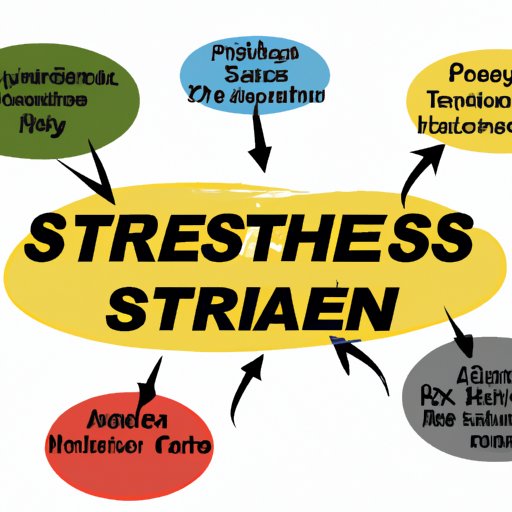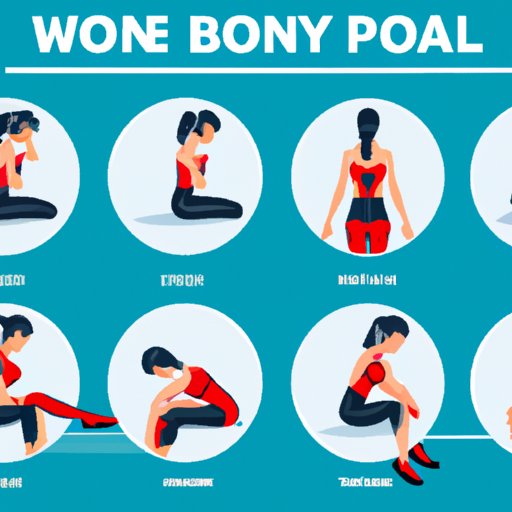Introduction
Whole body aches are a common complaint and can range from a mild annoyance to debilitating pain. They can be caused by various factors, and it’s essential to understand the possible causes to determine the best course of action. In this article, we aim to provide you with useful information to help you manage body aches and potentially improve your overall health.
Possible causes of whole body aches and how to diagnose them
Whole body aches are characterized by pain that affects the entire body or specific areas of it. They can be acute or chronic, and the causes can vary. The following are the most common possible causes:
Lifestyle factors
Poor posture, lack of sleep, and overexertion are common lifestyle factors that can contribute to body aches. Poor posture, for example, can lead to tension and pain in muscles, while lack of sleep can cause fatigue and pain. Overexertion can lead to muscle strain and soreness.
Conditions and illnesses
Some underlying conditions and illnesses can cause whole body aches as a symptom. These include fibromyalgia, autoimmune diseases like lupus, and chronic fatigue syndrome.
Medications
Some medications can lead to body aches as a side effect. These include cholesterol-lowering drugs, blood pressure medications, and some antibiotics.
Other causes
Other possible causes of whole body aches include viral infections, dehydration, and hormonal imbalances. In some cases, it might be difficult to determine the cause of body aches without seeking professional medical help.
Diagnostic tools for whole body aches
To determine the cause of body aches, a healthcare provider can perform various diagnostic tests, such as blood work, imaging tests, and nerve conduction studies.
Importance of seeking professional help when experiencing whole body aches
If you are experiencing persistent or severe body aches, it’s crucial to seek professional help. A healthcare provider can help determine the underlying cause, prescribe appropriate treatment, and offer guidance on how to manage pain.
Natural remedies for whole body aches and pain relief
Definition of natural remedies for pain
Natural remedies for pain are non-invasive and non-pharmaceutical ways to relieve pain. These remedies can range from physical techniques to alternative therapies.
Alternative ways to reduce pain
Practicing yoga and meditation
Yoga and meditation can help reduce stress, improve flexibility, and promote relaxation, leading to a reduction in body aches. Regular practice can also have long-term benefits for overall physical and mental health.
Using essential oils
Essential oils like peppermint or lavender can be applied topically or diffused in the air to help relieve pain and promote relaxation.
Heat therapy
Heat therapy, such as using a heating pad or taking a warm bath, can help reduce muscle tension and improve circulation, leading to pain relief.
Consuming anti-inflammatory foods
Eating foods with anti-inflammatory properties, such as leafy greens, fruits, nuts, and seeds, can help reduce inflammation and pain throughout the body.
Importance of combining natural remedies with professional medical advice
While natural remedies can help relieve pain, it’s essential to combine them with professional medical advice. Some remedies might work better for certain types of pain, and a healthcare provider can offer guidance on what is safe and appropriate for your specific needs.

The connection between emotional stress and physical pain
Explanation of how stress and anxiety can lead to physical pain
Stress and anxiety can lead to physical pain due to the release of stress hormones like cortisol and adrenaline. These hormones can cause tension in muscles, reduce blood flow, and increase inflammation, which can lead to pain throughout the body.
Tips and techniques for managing stress
Mindfulness-based therapy
Mindfulness-based therapy, such as mindfulness-based stress reduction (MBSR), can help individuals identify stress triggers and develop coping strategies to manage them.
Breathing and relaxation exercises
Deep breathing exercises and relaxation techniques like progressive muscle relaxation can help reduce tension in muscles and promote relaxation, leading to reduced pain and stress.
Cognitive-behavioral therapy
Cognitive-behavioral therapy (CBT) can help individuals identify and change negative thought patterns that contribute to stress and anxiety, thereby reducing physical pain.
Exercise and movement to ease whole body aches
Importance of exercise in reducing inflammation, improving circulation, and relaxing muscles
Exercise can help reduce inflammation throughout the body, improve circulation, and relax muscles, leading to pain relief. Regular exercise can also have long-term benefits for overall physical and mental health.
Examples of exercises that can help individuals experiencing whole body aches
Stretching exercises
Stretching exercises, such as yoga and Pilates, can help improve flexibility and reduce muscle tension, leading to pain relief. It’s essential to start slowly and gradually increase intensity to avoid further injury.
Low-impact exercises
Low-impact exercises like swimming and cycling can help improve cardiovascular health and reduce stress on joints, leading to pain relief.
Yoga and Pilates
Yoga and Pilates can help improve flexibility, strengthen muscles, and promote relaxation, leading to pain relief and long-term benefits for overall physical and mental health.
Tips for starting an exercise routine
It’s essential to start slowly and gradually increase intensity and duration to avoid further injury. It’s also essential to consult with a healthcare provider before starting an exercise routine to determine what is safe and appropriate for your specific needs.
How to manage chronic pain from whole body aches
Explanation of chronic pain and its impact on daily life
Chronic pain is defined as pain that persists for more than three months and can interfere with daily activities and quality of life. Chronic pain from whole body aches can be debilitating and impact physical and mental health.
Strategies for pain management
Cognitive-behavioral therapy
Cognitive-behavioral therapy (CBT) can help individuals identify and change negative thought patterns that contribute to chronic pain, leading to pain relief.
Mindfulness-based techniques
Mindfulness-based techniques like mindfulness-based stress reduction (MBSR) can help individuals manage chronic pain by promoting relaxation and reducing stress and anxiety.
Pain medications
Pain medications like NSAIDs and opioids can help manage chronic pain, but it’s essential to consult with a healthcare provider on appropriate dosages and potential side effects.
Importance of seeking professional medical advice for chronic pain management
Chronic pain management is complex and requires a personalized approach. It’s crucial to seek professional medical advice to determine the best course of action for chronic pain management.
The importance of good posture and ergonomics
Explanation of good body mechanics and ergonomics
Good body mechanics and ergonomics involve maintaining proper posture and positioning to reduce the risk of injury and minimize pain.
Tips for maintaining proper posture
While sitting
While sitting, it’s essential to keep feet flat on the floor, maintain a neutral spine, and keep shoulders relaxed and away from the ears.
While standing
While standing, it’s essential to distribute weight evenly on both feet, maintain a neutral spine, and avoid locking knees.
While lifting and carrying items
When lifting and carrying items, it’s essential to maintain proper posture, keep the weight close to the body, and bend at the knees to avoid strain on the back.
Lifestyle changes to improve overall health and reduce body aches
Importance of adopting healthier habits
Adopting healthier habits can improve overall physical and mental health, leading to reduced body aches and pain.
Examples of healthier habits to adopt
Getting enough sleep
Getting enough sleep can help reduce fatigue and improve physical and mental health.
Staying hydrated
Staying hydrated can help reduce inflammation and improve overall physical and mental health.
Reducing caffeine and alcohol consumption
Reducing caffeine and alcohol consumption can help reduce inflammation and improve overall physical and mental health.
Eating a balanced diet
Eating a balanced diet can help reduce inflammation, provide essential nutrients, and improve overall physical and mental health.
Overall benefits of adopting healthier habits
Adopting healthier habits can lead to overall physical and mental health benefits, reducing the risk of chronic conditions and improving quality of life.
Conclusion
Whole body aches can be caused by various factors, from lifestyle to underlying medical conditions. It’s crucial to seek professional medical help to determine the cause and appropriate treatment. You can incorporate natural remedies, exercise, and lifestyle changes to help relieve pain and improve overall health. By implementing the tips and techniques outlined in this article, you can potentially find relief and improve your quality of life.
Encouragement to seek professional medical help when experiencing whole body aches
If you are experiencing severe or persistent body aches, it’s essential to seek professional medical help. A healthcare provider can help determine the underlying cause and offer appropriate treatment.
Hope for readers to find relief through the tips and techniques provided in the article
We hope that the information provided in this article can help you find relief from whole body aches. By incorporating natural remedies, exercise, and lifestyle changes, you can potentially improve your overall physical and mental health.
